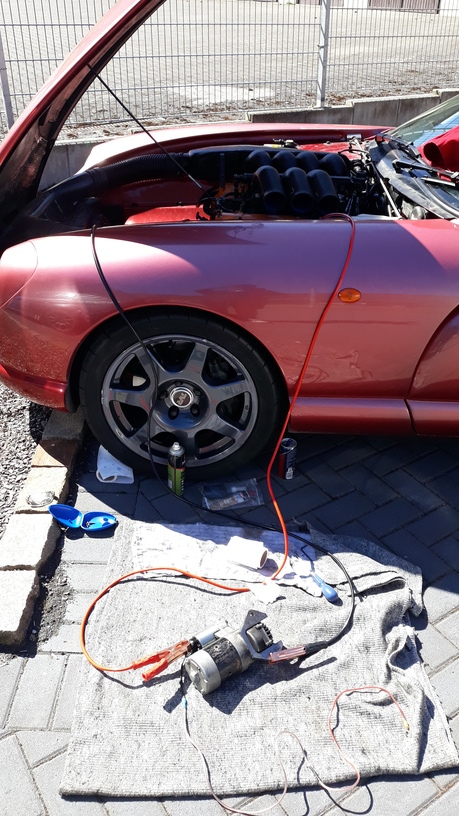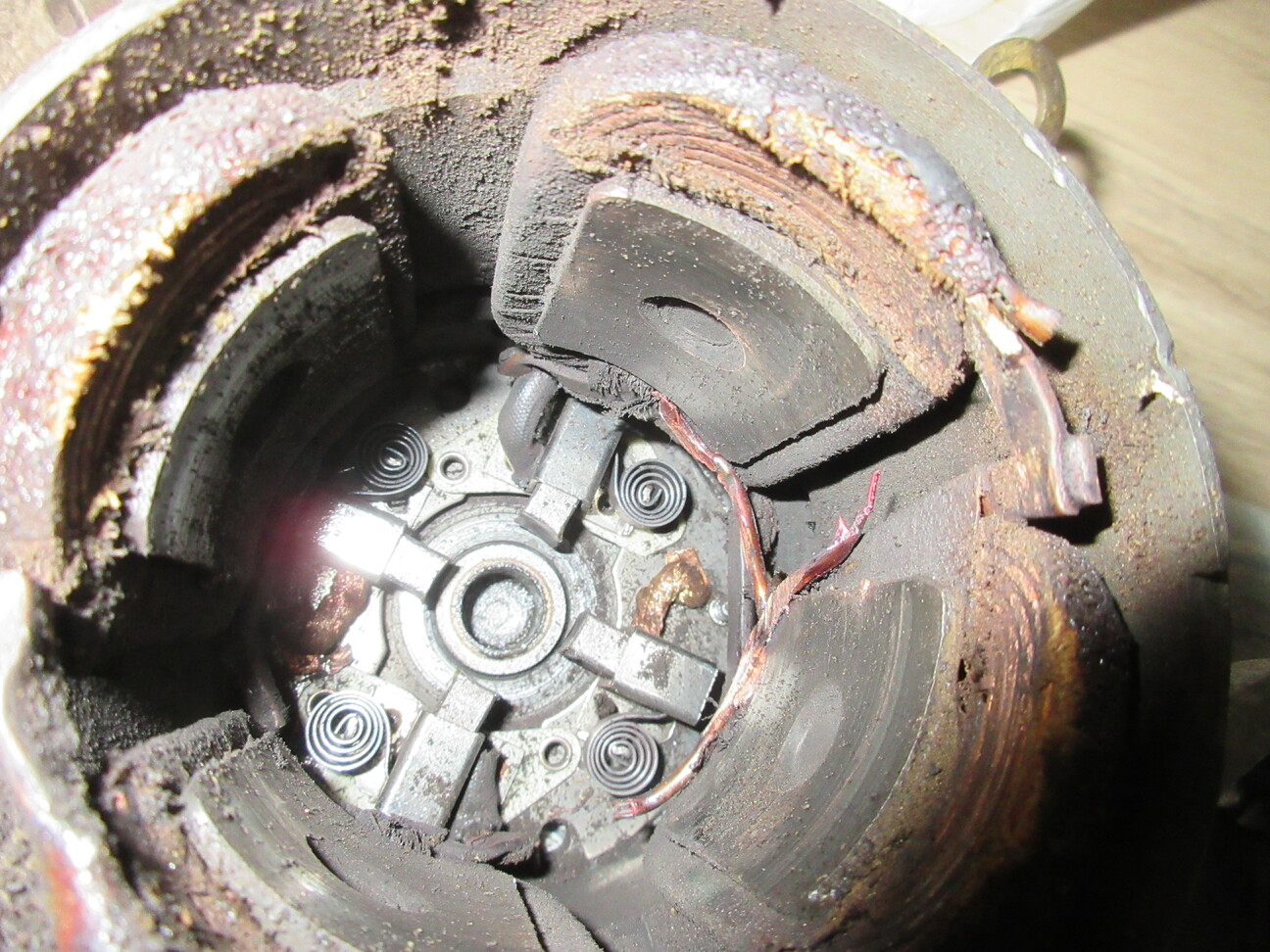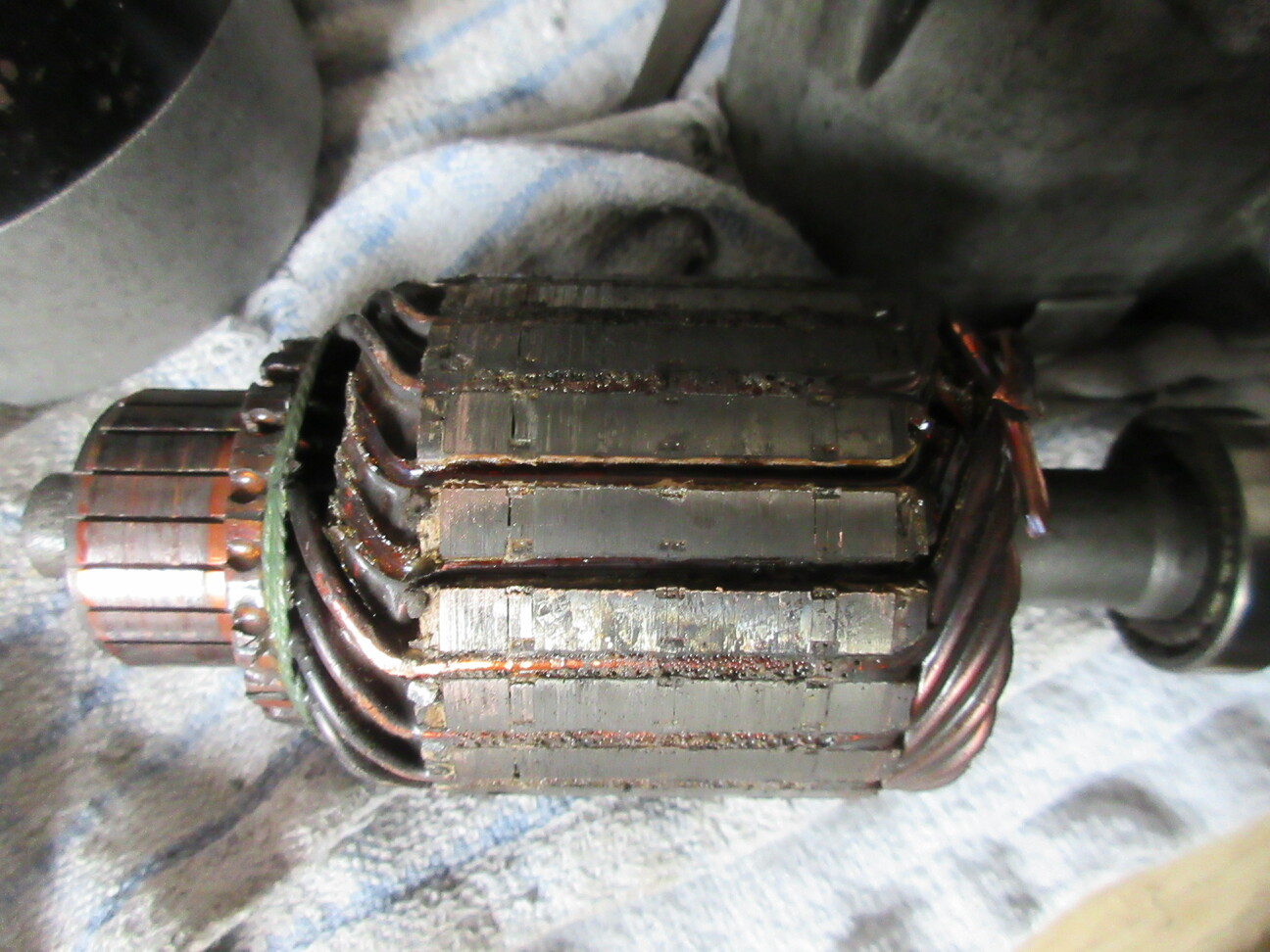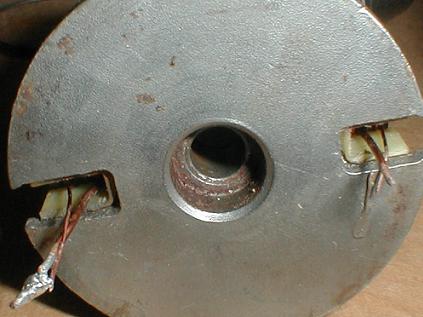Tilton Starter Motor Emergency
Discussion
I'm booked on the CD Ring event for tomorrow, but my Tilton starter motor has other ideas
I've spent all day trying to resolve an issue with the solenoid, and I've got nowhere

The solenoid was suffering from a heat soak issue, so I fixed it by fitting a new solenoid
Three weeks later the new solenoid has completely given up, and the old one that works almost all the time is on my workbench in London
Symptoms are that the solenoid doesn't have the strength to mesh the gears, and hit the switch that engages the motor
Works fine off the car, but just clicks when fitted
I have removed, cleaned, greased as required, refitted, tested, about four or five times, to no avail
Two days ago it would work within half a dozen attempts, now it just clicks, even when jumpered and triggered with a flying lead direct to the battery (bypassing all relays/immobilisers/buttons)
My Hail Mary is to grease up the flywheel teeth - I'm so out of ideas
PM me with your number if you're have any suggestions and are happy for me to call you
I've spent all day trying to resolve an issue with the solenoid, and I've got nowhere

The solenoid was suffering from a heat soak issue, so I fixed it by fitting a new solenoid
Three weeks later the new solenoid has completely given up, and the old one that works almost all the time is on my workbench in London
Symptoms are that the solenoid doesn't have the strength to mesh the gears, and hit the switch that engages the motor
Works fine off the car, but just clicks when fitted
I have removed, cleaned, greased as required, refitted, tested, about four or five times, to no avail
Two days ago it would work within half a dozen attempts, now it just clicks, even when jumpered and triggered with a flying lead direct to the battery (bypassing all relays/immobilisers/buttons)
My Hail Mary is to grease up the flywheel teeth - I'm so out of ideas
PM me with your number if you're have any suggestions and are happy for me to call you
There are normally two circuits through the solenoid.
One goes direct to ground, and this one holds the solenoid closed while it's cranking.
The other goes to the starter motor positive terminal. This is normally held low by the fairly heft windings of the starter motor, so while the solenoid is activated and before it has fully closed, if gives some extra oomph to the solenoid. Once the solenoid actually closes the contacts to the starter motor this second winding is effectively disabled (because the starter motor positive terminal is no longer anywhere near ground voltage). That's OK because at this point the solenoid is no longer moving and no longer needs to overcome friction.
Your symptoms suggest one of the circuits through the solenoid has either failed, or is not connected properly.
One goes direct to ground, and this one holds the solenoid closed while it's cranking.
The other goes to the starter motor positive terminal. This is normally held low by the fairly heft windings of the starter motor, so while the solenoid is activated and before it has fully closed, if gives some extra oomph to the solenoid. Once the solenoid actually closes the contacts to the starter motor this second winding is effectively disabled (because the starter motor positive terminal is no longer anywhere near ground voltage). That's OK because at this point the solenoid is no longer moving and no longer needs to overcome friction.
Your symptoms suggest one of the circuits through the solenoid has either failed, or is not connected properly.
GreenV8S said:
There are normally two circuits through the solenoid.
Many thanks, I hadn't appreciated there were two coilsI was puzzled that the solenoid didn't operate when using the body as the earth, only when the M terminal was connected to the field coil
But since it's the 'holding coil' rather than the 'sucking coil' that doesn't appear to work, would that explain how it has got suddenly worse?
Double checked, there is definitely no circuit via the solenoid body
Although you're definitely not supposed to lubricate the plunger, I have tried a light film of CopperEase, and it seems to improve the action off the car
Won't know whether it's helped until the starter is refitted
Although you're definitely not supposed to lubricate the plunger, I have tried a light film of CopperEase, and it seems to improve the action off the car
Won't know whether it's helped until the starter is refitted
Edited by ukkid35 on Tuesday 19th April 07:20
Open circuit between spade terminal and body?
If yes, check soldered joint at the spade terminal where it connects to the coils wire that's poked through the solenoid cap, same set-up if solenoid cap has a stud rather than a spade
Mmmm, just noticed there could be a fly lead rather than a spade terminal on the solenoid cap, same possible fault though at soldered joint on cap
If yes, check soldered joint at the spade terminal where it connects to the coils wire that's poked through the solenoid cap, same set-up if solenoid cap has a stud rather than a spade
Mmmm, just noticed there could be a fly lead rather than a spade terminal on the solenoid cap, same possible fault though at soldered joint on cap
Edited by Polly Grigora on Tuesday 19th April 10:12
ukkid35 said:
Won't know whether it's helped until the starter is refitted
It won't have helpedIt's a waste of time fitting the starter
As already mentioned above, there are 2 pull-in coils one of which is switched off once the solenoid main contacts are made
The fault that you have found (open circuit solenoid coil between spade/stud and body), means that the one pull-in coil that is working will be switched off once the solenoid contacts are made and the solenoid will throw back out......
......solenoid would then throw back in and then out, chattering solenoid is the end result
( The solenoid with the one failed coil may not even be strong enough to engage the pinion with the flywheel, they often aren't)
Both coils need to be functioning
Mmmm, just noticed there could be a fly lead rather than a spade terminal on the solenoid cap, same possible fault though at soldered joint on cap
Edited by Polly Grigora on Tuesday 19th April 10:35
ukkid35 said:
Although you're definitely not supposed to lubricate the plunger
Don't know who came up with this but it's a load of b ks
ksSolenoids are lubricated
A problem arises when solenoids lubricated with grease get very hot and the grease hardens
Solenoids in very hot areas are best lubricated with oil or grease that doesn't harden
Polly Grigora said:
......solenoid would then throw back in and then out, chattering solenoid is the end result
( The solenoid with the one failed coil may not even be strong enough to engage the pinion with the flywheel, they often aren't)
Both coils need to be functioning
That would explain the lack of strength, but on the rare occasions it does engage it will start the engine without chatter( The solenoid with the one failed coil may not even be strong enough to engage the pinion with the flywheel, they often aren't)
Both coils need to be functioning
ukkid35 said:
Polly Grigora said:
......solenoid would then throw back in and then out, chattering solenoid is the end result
( The solenoid with the one failed coil may not even be strong enough to engage the pinion with the flywheel, they often aren't)
Both coils need to be functioning
That would explain the lack of strength, but on the rare occasions it does engage it will start the engine without chatter( The solenoid with the one failed coil may not even be strong enough to engage the pinion with the flywheel, they often aren't)
Both coils need to be functioning
Agreed, the coil that is failing is in the circuit on the rare occasions it engages
The above does point to an intermittent open circuit coil and it isn't often the case that a coil goes open circuit internally
There is more of a chance that the coil has a bad connection at one end or the other and more often than not that bad connection is found at the soldered joint on the cap
The thing is though, both coils have one of their ends soldered to that fly lead connection on the cap, there are 3 leads soldered to that one point, coil 1, coil 2 and fly lead. It is most unusual for one coil to work and one coil to fail when the soldered joint is playing up but it does happen
More often than not, both coils fail when the soldered joint on the cap plays up
Something else to look for. At the opposite end of the solenoid where it bolts to the drive end bracket, look at the mounting face of the solenoid, you might see a copper cable welded to that face. The copper cable if seen is the other end of the coil that has failed, this is how the coil is earthed (if you can see it), check the copper coil cable to solenoid body heat welded connection is good
Solenoid coil earth connection are often seen at the solenoid drive end face, they rarely earth inside the solenoid body
Are you 100% sure the coil is open circuit?
Why I ask the above is because bad commutation often causes the other pull-in coil to not function correctly and a belt on the starter barrel often is enough to bounce the brushes and momentarily solve the bad commutation which in turn gets the solenoid operating correctly
Edited by Polly Grigora on Tuesday 19th April 10:37
I think you would need to isolate the solenoid electrically from the starter motor in order to test it properly. With that done it would be straight forward to measure the resistance from the common positive terminal to the solenoid ground, and the resistance from the common positive terminal to the main power contacts, to confirm the solenoid is electrically sound. You can also test the resistance between the starter motor positive terminal and ground at various motor positions to check whether that path is sound. In intermittent problem within the motor itself could prevent the solenoid from pulling in properly.
Thanks both, that is all really useful advice
Managed three laps this morning, relying on rolling starts, but ironically the thing that ended my track time was a leak from the diff output shaft seal
No sign of leaks on the way here, but that track is the ultimate stress test!
Will probably remove the starter again later to have another look at it, as it has developed an even more annoying fault - after starting the engine, the motor will run unengaged, but you don't hear it until you switch off the ignition
Disconnecting the battery doesn't stop it, but tapping it will
Managed three laps this morning, relying on rolling starts, but ironically the thing that ended my track time was a leak from the diff output shaft seal
No sign of leaks on the way here, but that track is the ultimate stress test!
Will probably remove the starter again later to have another look at it, as it has developed an even more annoying fault - after starting the engine, the motor will run unengaged, but you don't hear it until you switch off the ignition
Disconnecting the battery doesn't stop it, but tapping it will
Edited by ukkid35 on Wednesday 20th April 12:39
That might be a sign of a sticking solenoid, which might be related to the earlier problems.
I wonder what the maximum safe speed of a starter motor is. I had one stuck similarly (in a much more mundane car) for half an hour or so before I noticed, There was no obvious ill effect but I can't imagine it was good for it.
I wonder what the maximum safe speed of a starter motor is. I had one stuck similarly (in a much more mundane car) for half an hour or so before I noticed, There was no obvious ill effect but I can't imagine it was good for it.
ukkid35 said:
Definitely and never happened before I added CopperEase
However, I am confused that the contacts can be closed, even though the clutch has not remained engaged with the flywheel
Copperease doesn't seem like a smart choice. It's an anti-seize compound, not a lubricant. It's also not usually know for having an high temperature tolerance.However, I am confused that the contacts can be closed, even though the clutch has not remained engaged with the flywheel
Clutch/flywheel have nothing to do with a sticking solenoid. Do you mean the starter was running but not engaged with the flywheel? That does seem odd since the solenoid normally controls both. You haven't got an inertia-reel type starter have you?
ukkid35 said:
Will probably remove the starter again later to have another look at it, as it has developed an even more annoying fault - after starting the engine, the motor will run unengaged, but you don't hear it until you switch off the ignition
Disconnecting the battery doesn't stop it, but tapping it will
Disconnecting the battery doesn't stop it, but tapping it will
ukkid35 said:
I am confused that the contacts can be closed, even though the clutch has not remained engaged with the flywheel
Mmmmm, taking into consideration that this problem has only come about since removing the solenoid, I would be looking for the solenoid plunger not being correctly hooked over and into the top of the drive lever, this could cause the plunger to be forced down the solenoid barrel into the contacts plunger which might be enough to make the contactsThe starter you have could have a solenoid plunger that is permanently linked to the lever with a pin, if this is the case ignore me
The plunger was hooked over the lever correctly, and the spring was also located as the fulcrum for the lever
However, the run on issue which happened the other day has caused the starter to self destruct, the armature is now defunct
Not sure whether the field wingdings are damaged
Anyway, I'll be driving home without the starter motor fitted


However, the run on issue which happened the other day has caused the starter to self destruct, the armature is now defunct
Not sure whether the field wingdings are damaged
Anyway, I'll be driving home without the starter motor fitted


Gassing Station | General TVR Stuff & Gossip | Top of Page | What's New | My Stuff




